Quadrant Orientation
Based on the Teachings in The Tao of Astrology
by Kelly Lee Phipps
The classical Greek term ‘planētēs astēr’ meant ‘wandering stars,’ which included the Sun and Moon. The Sun and Moon were bestowed with the title Luminaries, to emphasize their unique core influence in the birth chart. Mercury, Venus and Mars are terrestrial planets while Jupiter, Saturn, Uranus and Neptune are gas giants. While the outer, modern planets and planetoids are important in chart interpretation, at first it’s best to start with the seven classical or ‘personal’ planets in order to obtain a complete perspective on the actual personality before adding in various peripheral, metaphysical factors. If we want to understand the core of a person, we must start with the seven personal planets. A concentration of traditional planets in one of the Hemispheres or four Quadrants of the birth chart indicates the fundamental Orientation of character. Working with the Classical chart consisting of the seven traditional planets, we can begin interpreting its structure through Hemispheric emphasis.
Hemispheric Emphasis
The twelve Houses of the birth chart symbolize the realms of human endeavor and experience. In ancient times they were regarded as mansions of the planetary gods and referred to simply as places. As the planets crossed the sky: rising, culminating and finally setting into the underworld, people became aware of the daily flow of change. The quality of the moment would change when the eastern Rising Sign shifted and a new archetype was felt empowering the moment with imagery and emotion that combined with the current planetary hour and general background cosmic weather of transiting aspects.
When a planet rose in the east and made its dramatic appearance, astrologers realized that people likewise made dramatic appearances at birth. The shape of the person’s bodily form and facial structure matched the description of the Rising Sign combined with the chart configuration of the planet associated with the Ascendant sign and any planets in the first House or conjunct the horizon in the same rising Decan. People were often named unconsciously by parents for this configuration. For example, I’ve met clients with Libra Rising named ‘Justice’ and Virgo Rising named ‘Virginia.’ The ancients noticed dramatic results when planets occupied the four Angles of the heavens: Rising, Setting, Culminating at the Midheaven, or on the Nadir beneath the world. The four Angles were seen as a cosmic freeway of peaking planetary energy.
With an eastern Ascendant hemispheric emphasis, individuals enjoy carving their own unique paths and feel like they are in charge of creating their destinies. They are cultivating Pioneer energy and are magicians at shaping their unique destinies. Individuals with a western Descendant hemispheric emphasis enjoy going with the flow and interacting with life events, people and experiences before taking dynamic action. They are cultivating Diplomat energy and excel at patiently waiting to see what opportunities arise from the establishment or relationships. Individuals with a Midheaven Hemispheric emphasis of planets enjoy taking responsibility on the front lines of society and accomplishing goals. They are cultivating Advisor energy and like to be in charge of professional situations. Individuals with a Nadir Hemispheric emphasis of planets below the horizon enjoy introspection and homesteading. They are cultivating Protector energy and enjoy creative musing and familial or inner circle experiences.
Note that a planet that is conjunct an Angle and sharing the same Decan (one of three, ten-degree segments of a sign) is conjunct the Angle and considered the same Orientation that the given Angle initiates and represents. For instance, planets just below the Eastern horizon in the same Decan as the Ascendant have a Spring Quadrant Orientation. Planets just above the Western horizon but in the same Decan as the Descendant would have an Autumn Quadrant Orientation. The same applies to planets occupying the Decans that grace the Midheaven (Summer) and Nadir (Winter). The figure below indicates the division of a Sign into three Decans and twelve Dwads. The first Decan of a Sign is always the same archetype as the sign, followed by the other signs of similar element going counterclockwise (the way planets transit) around the Zodiac.
Quadrant Orientation
The figure above indicates the basic structure and layout of a chart with symbols and instinct keywords for House divisions. The symbols for the Houses came to me through visions and were subsequently modified and refined through discussions with others astrologers. Quadrant Orientation defines one’s basic strategy for assimilating experience. They rhyme symbolically with the four Seasons and are named after them as indicated in the diagram. Planets in Angular houses are said to be strong in outward manifestation, the most Yang of their Quadrant. Planets in Cadent houses, while outwardly weakened, are actually stronger in the interior realms of wisdom, education and flexibility, able to adapt to circumstances. They are the most Yin of their Quadrant, which, from a Taoist perspective, signifies great strength through adaptability and the tendency to bend with the wind or go with the flow. Planets in Succedent houses combine the Yin and Yang essences in a mutually empowering and balanced manner that partakes of strength and adaptability.
Some charts feature a split Orientation where two or three Quadrants are emphasized. Other charts have no specific emphasis with planets spread in all four sections granting seasonal variability in character expression. Even if there is no clear Quadrant emphasis the Orientation differences between the natural polarities of the Sun/Moon, Mars/Venus, and Jupiter/Saturn can be contemplated. For instance, if the Sun lies in the opposite Quadrant from the Moon, this can create developmental tension as the Moon attempts to reflect the power of the Sun in a way that is different than the Sun’s way of radiating light. It acts like an opposition aspect. The sixteen arrangement possibilities between any of the three polarities make for some interesting characterization. The same idea should be applied to the Venus/Mars and Jupiter/Saturn polarities. Mercury as neutral messenger does not engage in polarization with one specific traditional planet but is still important by Quadrant in terms of thought generation and intellectual capacity. The following interpretations can be applied to birth chart Orientation.
Spring Quadrant: Since this quadrant is in the Eastern Hemisphere where the diurnal energy ascends and in the visible realm it has a double Yang essence. A concentration of classical planets in the upper left quadrant indicates a focus on self-actualization through social expression and integration. Self-development in the service of the culture becomes a life-theme and makes these leaders natural star players seeking objective recognition. Individual charisma and strong independence help drive personal goals achieved through societal contribution.
Summer Quadrant: Since this quadrant is in the Western Hemisphere where the diurnal energy is beginning to decline but still in the visible realm it has a mixed Yang/Yin essence. A concentration of classical planets in the upper right quadrant indicates a focus on cooperation through social expression and significance. Collaborative ventures in the service of culture becomes a life-theme and makes these investors ultimate team players seeking objective recognition. Interpersonal diplomacy and interdependence help drive communal goals that lead to collective achievements.
Autumn Quadrant: Since this quadrant is in the Western Hemisphere where the diurnal energy is in decline and in the invisible realm, it has a double Yin essence. A concentration of classical planets in the lower right quadrant indicates a focus on cooperation through private expression and analysis. Collaborative activities in the service of families and/or inner circles becomes a life theme and makes these emissaries masters of adaptation. Interpersonal alliances and interdependence drive subjective introspection for deep personal expression and fulfillment.
Winter Quadrant: Since this quadrant is in the Eastern Hemisphere where the diurnal energy is beginning to rise again but still in the invisible realm, it has a mixed Yin/Yang essence. A concentration of classical planets in the lower left quadrant indicates a focus on self-actualization through private expression and exchange. Self-development in the service of family and/or a close inner circle makes these lone wolves masters of self-reliance. Individual charisma and independence drive subjective introspection for deep personal expression and fulfillment.
Vacant Quadrants: When there is an empty Quadrant containing no planets, there tends to be a lack of evolutionary development in the instinctual and experiential affairs of the Houses involved. For example, if a person has no planets in the Autumn Quadrant, there may be a deficiency in the affairs related to Roots, Productivity and Discernment along with the corresponding experiences of having a family, raising children and employing skills. By consciously focusing on growing in these areas, a person can develop a holistic synthesis of character and life expression.
Orientation in Action
Having an understanding about how Orientation relates to specific personality inflections, let’s look at some examples of famous charts. We’ll start by looking at the birth chart of the prolific, private poet Emily Dickinson. Thought of as an eccentric by the locals, she lived a mostly introverted and reclusive life, and became known for her penchant for white clothing, her reluctance to greet guests or, later in life, to even leave her room. Most of her friendships were therefore carried out by correspondence. Many of her poems deal with themes of death and immortality, two recurring topics in letters to her friends.
We would expect many planets below the horizon (introverted) and in the east (self-focused) if indeed the theory of quadrant influence bears fruit. As it turns out, there is a great emphasis on the Winter Quadrant which produces lone-wolf types and self-actualization through private expression and exchange. Her individual charisma and independence drove her love of subjective introspection for deep personal expression and fulfillment.
With the soul of a poetic artist (Libra 12th House Moon), walking the path of the graceful Scholar of language (Sagittarius Sun conjunct Venus and Mercury), she embodied the face of the intense Alchemist-Detective (Scorpio Rising) possessing the creative courage of a theatrical Pioneer (Aries 5th House Mars). The themes of death and immortality are not only reflected in her gothic Ascendant but also by the four planets occupying the cool Winter Quadrant. The Moon polarizes with the Sun and it occupies the Spring Quadrant to reflect the light of the Sun into self-actualization through social expression and integration. Self-development in the service of the culture becomes a life-theme and makes these leaders natural star players seeking objective recognition. Individual charisma and strong independence help drive personal goals achieved through societal contribution. While mostly unrealized in her lifetime, Dickinson was no team player and starred in an epic role to evoke her poetic themes of morbidity, imaginative garden realms, undiscovered continents, the Christ, and the landscape of the spirit. As a person with three personal planets in the Winter Quadrant, I relate directly to her psychology as an author of many poems about death, rebirth and fantasy novels laden with mythic histories of unknown worlds.
William Butler Yeats was an Irish poet and playwright, and one of the foremost figures of 20th Century literature. A pillar of both the Irish and British literary establishments, in his later years he served as an Irish Senator for two terms.
An inward, deep contemplative writer like Dickinson, Yeats’ chart also reveals a strong need to serve in an extroverted manner with three planets above the horizon including the navigating guide of the Aquarian Ascendant, Saturn, which is itself expressed in Libra (Justice & Harmony) and the 9th House (Law & Principles). As a man, Mars would also make a prominent stamp on his masculine essence in theatrical Leo (playwright) combining with Saturn in the Summer Quadrant. The Summer Quadrant indicates a focus on cooperation through social expression and significance. Collaborative ventures in the service of culture becomes a life-theme and makes these investors ultimate team players seeking objective recognition. Yeats wrote A Vision by collaborating with his wife and her spiritual guides and went on to collaborate with the world through becoming a senator. Interpersonal diplomacy and interdependence help drive communal goals that lead to collective achievements, such as Irish independence! The Moon polarity with the Sun from the Wintry Quadrant added interior depth to his writings along with Aquarian humanitarian zeal. Notice that the Venus/Mars polarity is torn between the lower Autumn Quadrant and the upper Summer Quadrant and also sharing a conflictual square aspect, expressed through his fascination with his muse, Maud Gonne. Behind the scenes in the metaphysical realms, Pluto conjunct Venus and Uranus conjunct Sun add considerable gravity to the Autumn Quadrant and the themes of his life.
Many of my favorite writers have most their planets below the horizon like Maria Rainer Rilke, Alan Watts, Percy Shelley, Walt Whitman, William Faulkner and J.R.R Tolkien. Tolkien and Faulkner have all seven personal planets beneath the horizon, reflecting a total devotion to idealism and crafting of fantasy worlds like Middle Earth and Yoknapatawpha County. What about writer’s with upper planetary emphasis? Do they even exist? Of course they do, and they have made some of the greatest social contributions from Hamlet to Harry Potter.
Indeed, one of the greatest writers in history has a Spring Quadrant emphasis: William Shakespeare. While Shakespeare’s inventive Aquarian Moon guides the Ascendant and is located in the Summer Quadrant (A Midsummer Night’s Dream) the emphasis is on the Spring Quadrant, known for producing star-players. With Saturn in the same decan as the Ascendant, it is considered a Spring Quadrant planet, thus giving him five of seven personal planets in this region devoted to self-actualization through social expression and integration. Self-development in the service of the culture becomes a life-theme and makes these leaders natural star players seeking objective recognition. Individual charisma and strong independence help drive personal goals achieved through societal contribution. Many of Shakespeare’s plays have highly social themes touched by the gravity and melancholy of Saturn, everything from tragedies and histories to comedies and romances. Often called England’s national poet and the “Bard of Avon,” he is widely regarded as the greatest writer in the English language and the world’s pre-eminent dramatist.
While he did work on collaborations earlier and later in life (Summer Aquarian Moon), Shakespeare’s writing found its audience through social enactment as theatrical performances that focused on the tragic use of social power and the Spring wildness in love, reflected by both Venus and Mars in the mystical 12th House. In Shakespeare’s personal life he married Anne Hathaway at age 18 and they produced two children and lived in harmony, unlike Yeats and Maud Gonne. Other writer’s with a Spring Quadrant Orientation include H. P. Lovecraft, Thomas Mann and Gabriel Garcia Marques. The modern author J.K. Rowling, author of the world famous Harry Potter series also has a Spring Quadrant focus, famous for her coming of age fantasy tales. We’ve seen what writers appear to focus on in the Winter, Autumn and Spring sectors of the chart with Dickinson, Yeats and Shakespeare. What about a writer whose chart has a primarily Summer Quadrant emphasis?
The chart of Bertrand Russell above features four planets (including the navigator of the Ascendant) in the Summer Quadrant, mostly in realistic, pragmatic Taurus. Bertrand Russell was a British philosopher, logician, mathematician, historian, social critic with liberal, socialist and pacifist views. His pacifism is reflected and amplified by Mars in the sign of peace conjunct the Sun. In true Taurian fashion, he led the revolt against idealism in the early 20th Century and is considered one of the founders of analytic philosophy. A champion of humanitarian ideals and freedom of thought, Russell held deep convictions against religion and imperialism, which led to his imprisonment and an eventual Nobel Prize for literature.
Sometimes one’s suffering brings great rewards, especially with a bucket pattern (spiritual devotion) to Saturn in the Winter Quadrant. A concentration of classical planets in the upper right quadrant indicates a focus on cooperation through social expression and significance. Collaborative ventures in the service of culture becomes a life-theme and makes these investors ultimate team players seeking objective recognition. Interpersonal diplomacy and interdependence help drive communal goals that lead to collective achievements. He co-authored, with A.N. Whitehead, Principia Mathematica, an attempt to ground mathematics on logic. While his life and works reflect a decidedly Summer Orientation, the Jupiter/Saturn polarity opposition aspect stretched between the Summer and Winter spheres may have led to his deep seated spiritual conflict that led him to become an agnostic, an atheist and an analytical philosopher with a deep disdain for religion. He spent most of his time involved in political and social activism. Other writers with a profound Summer Quadrant emphasis include Sigmund Freud, F. Scott Fitzgerald and Samuel Taylor Coleridge. Coleridge coined the phrase, “suspension of disbelief” and suffered from severe depression (Venus conjunct Saturn) that led to opium addiction. Some say he was bipolar, reflected in the Jupiter/Saturn polarity stretched across the Summer-Winter axis like Bertrand Russell, but with Saturn above and Jupiter below.
In many cases, it becomes a major contentious life-theme when polarity planets are in opposite hemispheres, growing even more acute when occupying opposite Quadrants. This principle can be explored in detail through the life of the Dutch philosopher Baruch Spinoza, whose chart features a rationalist Summer Quadrant emphasis with the Sun and Saturn in Sagittarius in the 9th House of Culture and Meaning across from both Jupiter and Moon in Taurus in the 2nd House of Values and Attachment combined with a distinct union of Venus and Mars in Sagittarius in the 9th House.
After his expulsion from the Jewish community for his radical views, Spinoza laid the groundwork for the 18th century Enlightenment and modern biblical criticism. As one of the greatest rationalists, his magnum opus, the posthumous Ethics, which opposed the Cartesian mind-body duality, earned him recognition as one of Western philosophy’s most important contributors.
The Sun/Moon and Saturn/Jupiter polarities stretched across the Summer/Winter Quadrants inspired an ethical contribution to society constrained by wariness and caution due to his fierce independent stance against the prevailing scientific and religious views of his time. Simultaneously, he was impassioned by the Venus/Mars union (With Mars guiding an Aries Ascendant) leading to a deep faith in God as an abstract and impersonal being that had a revolutionary impact upon philosophy.
Multiple Quadrant Focus
Many of the greatest writers have charts that feature planets in each Quadrant, able to explore the emotional textures of all the seasonal influences in their works. One such writer was Gustave Flaubert. This French novelist is considered one of the greatest Western novelists in history, known for his ability to scrupulously avoid the inexact, the abstract and the vaguely inapt expression. Never having let a cliche enter his work, he believed in, and pursued, the principle of le mot juste (the right word), sometimes spending a week to complete one page! With so many Quadrants to choose from, I can imagine his inner struggle for perfection! As a writer, other than a pure stylist, Flaubert was nearly equal parts romantic and realist. The publication of Madame Bovary in 1856 was followed by more scandal than admiration; it was not understood at first that this novel was the beginning of something new: the scrupulously truthful portraiture of life. Gradually, this aspect of his genius became accepted.
Another great writer and Enlightenment Age renaissance man named Johann Wolfgang von Goethe (pronounced Gierta) was a German writer, pictorial artist, biologist, theoretical physicist and polymath. He is considered the supreme genius of modern German literature with works that span the fields of poetry, drama, prose, philosophy and science. His Faust has been called one of the greatest dramatic works of modern European literature.
Like Flaubert, his chart features at least one planet in every Quadrant giving him the innate ability to draw on all four seasonal influences. The positions and tensions by Quadrants between the polarities each influenced their perspectives and writings. Flaubert’s Sun was in the Winter Quadrant with Moon opposite in the Summer Quadrant adding the Spinoza effect of being a ruggedly independent person while maintaining a dramatic need for social contribution. The Venus/Mars polarity stretched between the upper and lower hemispheres contributed to a lackluster love life that led to him never marrying, losing interest in romance and eventually seeking platonic companionships. But the Jupiter/Saturn conjunction in pioneering Aries in the 6th House of Devotion and Discernment granted unprecedented detail and perfection to his extreme style.
In Goethe’s chart, the Sun in Virgo in the decan of the Midheaven (Summer Quadrant) faces off with the imaginative Pisces Full Moon occupying the depths of the 4th House of Ancestry and Roots in the Autumn Quadrant, adding a Yeats-like effect to his character. This is further reinforced by the Venus/Mars polarity stretched between the Spring and Winter Quadrants in the earth signs of Virgo and Capricorn, respectively.
Instead of the unifying focus of the Jupiter/Saturn conjunction in Flaubert’s chart, Goethe’s Saturn on the Scorpio Ascendant (like Shakespeare’s in Cancer) evokes a melancholy darkness polarized with the spiritual awakening of a dignified Pisces Jupiter in the Autumn Quadrant, perfectly reflected in his poem The Holy Longing:
Tell a wise person, or else keep silent,
Because the mass man will mock it right away.
I praise what is truly alive,
What longs to be burned to death.
In the calm water of love nights,
Where you were begotten, where you have begotten,
A strange feeling comes over you
When you see the silent candle burning.
Now you are no longer caught
In the obsession with darkness,
And a desire for higher lovemaking
Sweeps you upward.
Distance cannot make you falter
Now, arriving in magic, flying
And finally insane for the light,
You are the butterfly, and you are gone.
And so long as you haven’t experienced this:
To die, and so to grow,
You are only a troubled guest
On the dark earth.
Quadrant Orientation Summary
In conclusion, the four seasonal Quadrants of birth chart Orientation have a dramatic effect on the specific focus of human character. From the interior wintery depths of Dickinson’s privacy and seclusion to the outward display of Russell being imprisoned for his defiance of the will of the state, we have observed a glorious tapestry outlining the spectrum of possibilities inscribed in the Quadrants of the heavens at birth. While most charts will emphasize multiple Quadrants, it is the combinations of their meanings and core interpretations that create the emergent character focus combined with the unique relationships between the three polarities of the Sun/Moon, Venus/Mars and Jupiter/Saturn. Some of the most unique characterological tensions occur when polarity planets occupy opposing Hemispheres or Quadrants. Some of the greatest focal points of human genius are reflected in the combinations of these polarity planets in the same Quadrant as reflected in Flaubert’s Jupiter/Saturn in Aries in the Autumn Quadrant or Spinoza the philosopher’s Venus/Mars conjunction in Sagittarius in the Summer Quadrant. In addition, the planet that guides the Ascendant by dignity creates a specific life-theme in its occupied Quadrant related to the interpretation of the Sign-House configuration and any dominant aspects.
While Chart Orientation is crucial to understanding the individual, it should be integrated with one of the six specific Chart Patterns formed by the seven traditional planets and one of the six unique Dispositorship Patterns, both featured in every birth chart. Together these three factors make up the defining structure of the natal chart, granting specific shape to character in both the charts of individuals and events. This synthesis of these three factors will be covered in detail in the Tao of Astrology and expounded upon in future articles and videos.
© 2012 Kelly Lee Phipps – All Rights Reserved


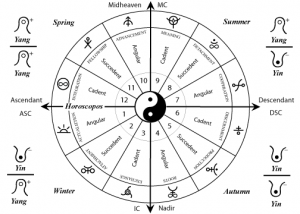
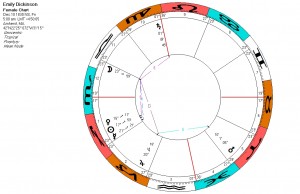
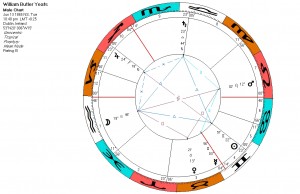
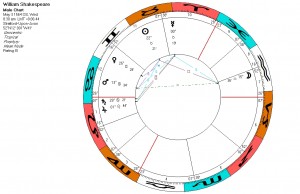
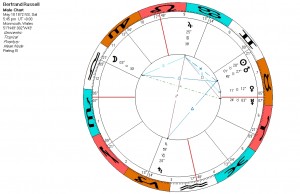
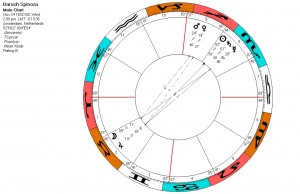

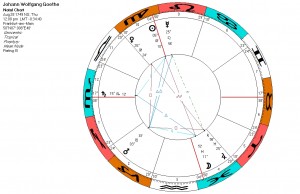

{ 4 comments… read them below or add one }
You actually make it appear really easy with your presentation however I to find this matter to be actually something which I believe I might never understand.
It seems too complicated and very vast for me. I am having a look forward on your subsequent submit, I will try to get
the grasp of it!
go to divineinspirationastrology.com
My spouse and I stumbled over here coming from a different page and thought I may
as well check things out. I like what I see so now i’m following you.
Look forward to finding out about your web
page repeatedly.
see divineinspirationastrology.com as it has been updated